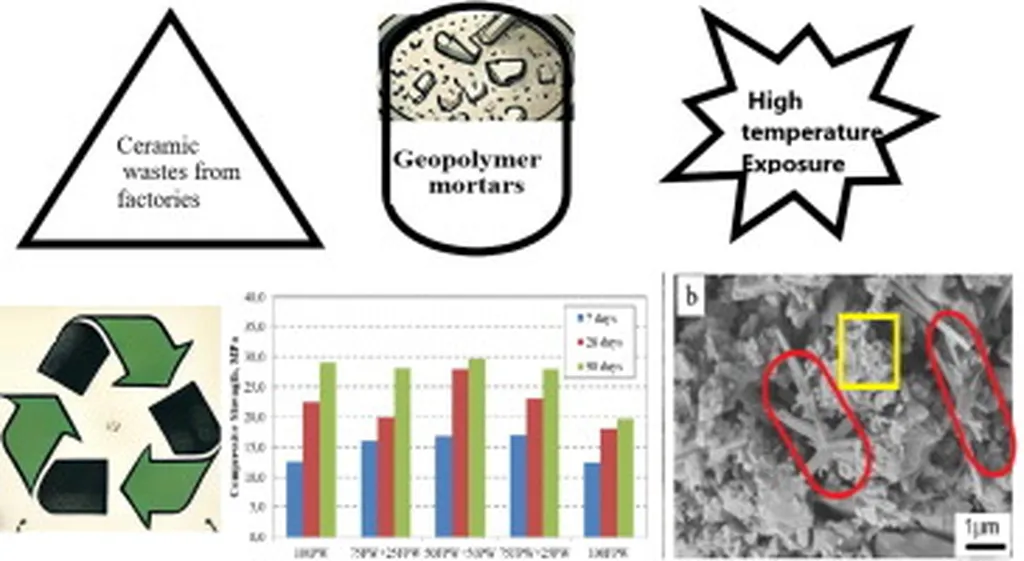In the quest for sustainable construction materials, researchers have made a significant stride by enhancing the performance of geopolymer mortar, a promising alternative to traditional concrete. A recent study led by Jay Bhavsar from the Charotar University of Science and Technology in India has revealed that incorporating ceramic polishing waste (CPW) into fly ash-based geopolymer mortar can improve its heat and abrasion resistance, offering a more durable and eco-friendly construction material.
Geopolymer concrete (GPC) is gaining traction due to its lower environmental impact compared to conventional concrete. It utilizes industrial by-products as precursors, making it an attractive option for sustainable construction. The study focuses on two types of CPW: vitrified tile CPW (VCPW) and wall tile CPW (WCPW), which are typically discarded as waste from the tile polishing process.
Bhavsar and his team investigated the effects of replacing fly ash with 15% CPW in geopolymer mortar (GM) and subjected the samples to different curing conditions: ambient, 60°C for 24 hours, and 60°C for 48 hours. The results were promising. “Replacing fly ash with 15% CPWs improves early-age compressive strength and abrasion resistance and provides similar performance in heat resistance at 1000°C,” Bhavsar explained.
The study also analyzed the microstructure of the GM samples after heat exposure using scanning electron microscopy (SEM). The findings indicated that heat exposure promoted additional geopolymerization, reducing the degradation of the gel and enhancing the material’s overall performance.
The curing conditions played a crucial role in the early-age compressive strength and fire exposure performance at 500°C. This insight could lead to more efficient curing processes in industrial settings, potentially reducing energy consumption and costs.
The implications for the construction and energy sectors are substantial. Enhanced heat and abrasion resistance in geopolymer mortar can lead to more durable and long-lasting structures, reducing maintenance costs and extending the lifespan of buildings and infrastructure. Moreover, the use of industrial by-products like CPW not only diverts waste from landfills but also reduces the demand for virgin materials, contributing to a circular economy.
As Bhavsar noted, “This research opens up new possibilities for utilizing industrial waste in construction materials, paving the way for more sustainable and resilient infrastructure.” The study, published in the Electronic Journal of Structural Engineering (known in English as the Electronic Journal of Structural Engineering), highlights the potential for innovative materials to address both environmental and performance challenges in the construction industry.
The findings could inspire further research into the optimization of geopolymer mortars and the incorporation of other industrial by-products. As the construction industry continues to seek sustainable solutions, this study offers a compelling example of how waste materials can be transformed into valuable resources, shaping the future of construction towards a more eco-friendly and resilient horizon.

